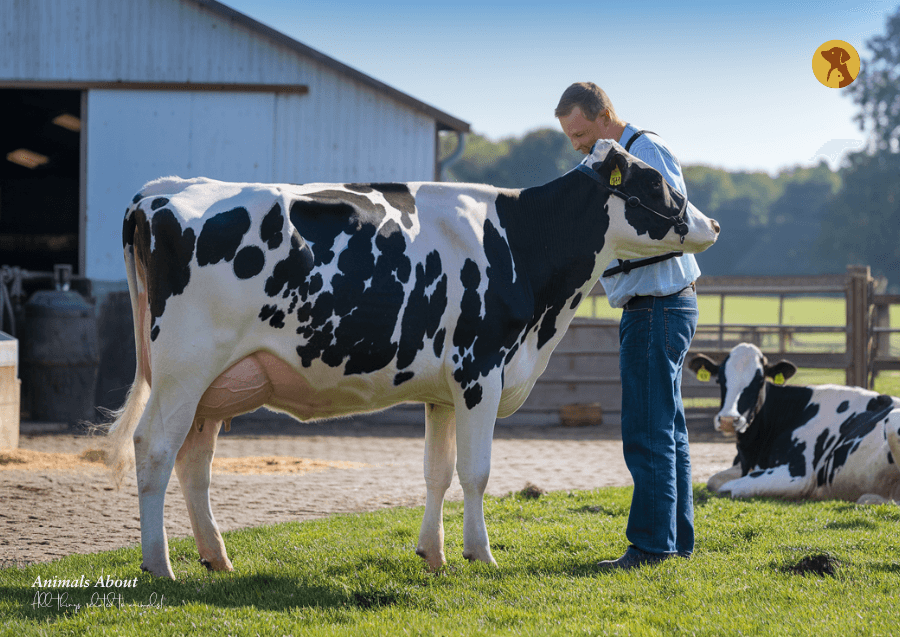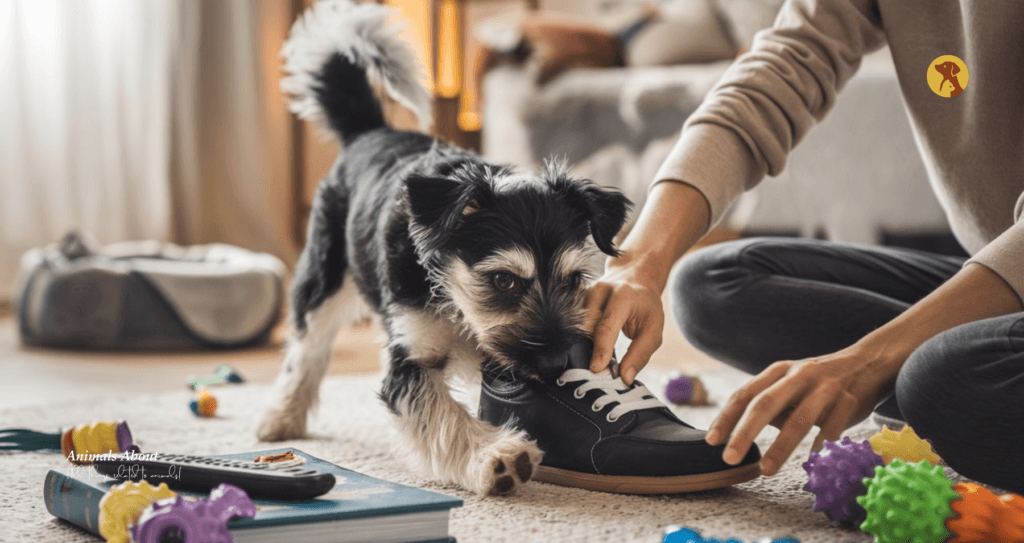Cow Not Producing Milk? Causes & Solutions

When a cow stops producing milk, it can be a stressful situation for farmers and animal lovers alike. Whether you’re a small-scale dairy farmer, a homesteader, or someone who simply cares about animals, understanding why your cow is not producing milk is the first step toward resolving the issue. In this article, we’ll explore the most common causes of low milk yield and offer natural, effective solutions to help your cow regain healthy milk production. Why Is My Cow Not Giving Milk? 1. Natural Dry Period: A Common Reason Your Cow Is Not Producing Milk Cows naturally go through a dry cow period, typically lasting around 60 days before calving. This rest phase is essential for udder recovery and the development of the next lactation cycle. If your cow is nearing calving or hasn’t calved recently, she might be in this necessary resting period. This phase allows the cow’s udder tissue to regenerate and prevents future udder health issues. It’s crucial not to force milk production during this time, as it can lead to lactation issues in cows later on. 2. Poor Nutrition in Cattle Can Lead to a Cow Not Producing Milk Nutrition is a key factor in cow milk supply problems. If a cow’s diet lacks the necessary nutrients, it will impact both the quality and quantity of milk. Important dietary elements include: A calcium deficiency in cows can lead to a condition called milk fever, which affects lactation. Always ensure your cow has access to balanced, nutrient-rich food and clean water. 3. Hormonal Imbalance Causing Cow Not Producing Milk The milk production process is hormone-dependent. If your cow is suffering from a hormonal imbalance, it can disrupt milk let-down. Stress, illness, and poor nutrition often trigger hormonal shifts, leading to reduced milk yield or a complete stop in milk production. 4. Mastitis and Cow Not Producing Milk One of the leading causes of milk loss in cattle is mastitis a bacterial infection in the udder. This painful condition not only reduces milk quantity but also affects its quality. Symptoms include: Early detection and treatment are crucial. Proper hygiene and regular checks can help prevent mastitis. 5. Stress Affecting Cows Believe it or not, cows are sensitive animals. Stress can have a direct impact on their ability to produce milk. Sources of stress include: Stress interferes with oxytocin release, which is essential for milk let-down. Reducing stressors can significantly improve lactation issues in cows. 6. Reproductive Health: Cow Not Pregnant If your cow hasn’t calved recently or isn’t pregnant, her milk production may naturally decline and stop. Cows typically lactate for about 10 months after calving. Without a fresh pregnancy and calving cycle, milk production in cows ceases. Monitor heat cycles and consult a vet if your cow isn’t showing signs of estrus or conception. 7. Age and Genetics A cow’s age and milk yield are closely connected. Older cows may naturally produce less milk. Additionally, some cows are genetically predisposed to lower milk production. This doesn’t necessarily indicate a health problem, but good cattle management can help maximize potential. How to Help a Cow Not Producing Milk Start Lactating Again If you’re dealing with a cow not producing milk, don’t worry. There are several effective and natural ways to encourage milk production again. 1. Balanced Nutrition Plan A well-balanced diet is the foundation of good dairy cow health. Here are a few tips: Consider consulting a livestock nutritionist to develop a tailored feeding program. 2. Enhance Milking Routine Proper milking techniques can make a huge difference: Avoid over-milking, which can cause irritation and udder health problems. 3. Minimize Stress Creating a calm and predictable environment can boost milk production: A relaxed cow is a productive cow! 4. Check for Mastitis and Infections Regularly inspect your cow for signs of mastitis or other infections. Keep the milking area and equipment clean. If you suspect mastitis, isolate the cow and contact a vet immediately. Preventative measures include: 5. Support Reproductive Health Ensure your cow is on a regular breeding schedule. If your cow is not pregnant, work with a vet to check for fertility issues. Artificial insemination and timed breeding programs can help maintain regular calving intervals and consistent milk flow. 6. Vet Consultation for Cows If all else fails, seek a vet consultation for cows. Vets can: Never hesitate to involve a professional. Early intervention is key to preventing long-term problems. How to Prevent Future Cases of Cow Not Producing Milk To maintain high milk yield over time, implement the following preventive practices: ✅ Consistent Monitoring Track feed intake, health status, and milk output daily. Early detection of changes can help catch problems before they worsen. ✅ Proper Cattle Management Good cattle management includes: ✅ Regular Health Checks Schedule bi-annual vet visits. Discuss lactation issues, reproductive health, and nutritional plans. ✅ Breeding Management Avoid overbreeding. Allow time for udder recovery and overall rejuvenation. ✅ Age Consideration Older cows may require specialized care. Adjust nutrition and handling accordingly. Final Thoughts When a cow is not producing milk, it’s not always a sign of something serious. Many issues, like poor nutrition, stress, or natural reproductive cycles, are easily addressed with the right care and attention. Understanding the reasons for low milk yield and applying natural, supportive solutions can help bring your cow back to healthy, consistent milk production. With proper cow feeding, vet consultation, and cattle management, you can ensure both the well-being of your animal and the productivity of your farm. If you’re interested in expanding your homestead or exploring other animals for your farm, check out our guide to the Best Farm Animals for Beginners. Remember, each cow is unique. Treat her with care, patience, and respect, and she’ll reward you in return.
How to Stop a Dog from Chewing Everything: Effective Solutions for Destructive Behavior

Why Do Dogs Chew Everything? Chewing is a natural behavior for dogs, but when it gets out of control, it can cause significant damage to your belongings. While puppies chew to ease teething pain, adult dogs might chew to relieve boredom, anxiety, or simply due to their instinctive need to chew. Understanding why dogs chew everything is key to solving the issue. Chewing can express frustration or stress, especially when a dog is left alone for extended periods. By identifying the root cause, you can prevent the behavior before it escalates into more serious destruction. If your dog’s chewing is related to health or breed-specific tendencies, check out our article on dog breeds with common health issues. Stop Dog Chewing Prevention Tips That Work Preventing your dog from chewing everything requires consistency, training, and understanding of their needs. Here’s how you can address the issue with confidence. 1. Dog-Proof Your Home to Stop Dog Chewing Start by removing tempting objects from your dog’s reach. This means putting shoes, cords, and anything that could be chewed away from your dog’s path. Not only does dog-proofing your home help eliminate the temptation, but it also protects your furniture and valuables. By eliminating distractions, you can help redirect their attention to more acceptable chew options. 2. Offer Safe Chew Alternatives to Stop Dog Chewing Dogs need to chew, so provide them with age-appropriate chew toys. Choose durable, vet-approved toys designed to handle the natural chewing instinct of dogs. Rotate the toys regularly to keep them engaged and avoid boredom. Instead of getting frustrated by a chewed-up shoe, you can smile knowing that your dog is enjoying a toy that satisfies their chewing urges without causing harm to your home. 3. Use Chew Deterrent Sprays to Prevent Chewing in Dogs If your dog is particularly persistent, try using a chew deterrent spray. These sprays have a bitter taste that dogs find unpleasant, discouraging them from chewing on your furniture or shoes. With consistent use, you can teach your dog that certain objects are off-limits. The trick is to be consistent and patient as the spray works its magic over time. Training Stop Dog Chewing Training your dog is one of the most effective ways to solve the chewing issue. By reinforcing good habits and curbing bad ones, you can create a more enjoyable home for both you and your dog. 4. Redirect Destructive Behavior One of the most effective techniques for stopping destructive chewing is to redirect your dog’s attention. When you catch them chewing something inappropriate, calmly take the object away and provide them with a chew toy. When they switch to the toy, reward them with praise or a treat. This positive reinforcement method teaches your dog the right way to chew, creating lasting habits. 5. Crate Training to Stop Dog Chewing When Home Alone If your dog is chewing because of anxiety or boredom when you’re not home, crate training can be an excellent solution. Crates provide dogs with a secure space where they can’t chew on furniture or other household items. It also allows them to feel safe, reducing anxiety when left alone. Think of it as giving your dog a cozy den where they can rest, away from destructive habits. 6. Mental and Physical Stimulation to Prevent Dog Chewing A bored dog chewing is a frequent issue that pet owners face. Dogs need regular mental and physical exercise to stay content. Increase their daily walks, playtime, and training sessions to keep their minds and bodies active. Adding interactive toys and puzzle feeders can also stimulate your dog’s brain, helping reduce the desire to chew out of boredom. Puppy Chewing Solutions That Actually Help 7. Address Teething in Puppies When puppies chew, it’s often due to the discomfort of teething. Puppy teething solutions include frozen chew toys or rubber rings, which help soothe sore gums. Giving your puppy these safe alternatives will keep them distracted from furniture or your favorite shoes. Remember, teething usually peaks around 4 to 6 months, so expect this behavior to subside as they mature. 8. Set Boundaries Early Start training your puppy early to prevent destructive chewing. Puppy training tips like “leave it” or “no chew” can help them understand which items are off-limits. By setting boundaries early, you establish clear rules and reduce confusion as your puppy grows. The earlier you start, the less likely you are to face problems with destructive chewing later on. Behavioral Issues Behind Chewing Sometimes, chewing is not just a physical need—it can be an emotional response. Here’s how to recognize when it’s more than just bad behavior. 9. Signs of Anxiety in Dogs Excessive chewing may be a symptom of separation anxiety in dogs. If your dog chews obsessively when you leave the house, it may be a sign that they are feeling stressed or scared. Look for signs of distress, such as pacing, drooling, or excessive barking when you’re preparing to leave. Consulting with a vet or a professional dog trainer can help you address the underlying anxiety and reduce destructive behavior. 10. Positive Reinforcement for Dogs Punishment often backfires when training dogs. Instead, use positive reinforcement to encourage good behavior. Reward your dog with treats, praise, or playtime whenever they chew their toys instead of furniture. This helps them connect the action with a positive outcome. Through consistent positive reinforcement, you can shape your dog’s behavior over time. Disclaimer: This article is published by animalsabout.org, your trusted source for pet advice. Always consult a vet for serious behavioral issues.
